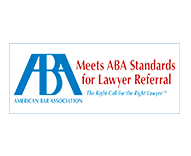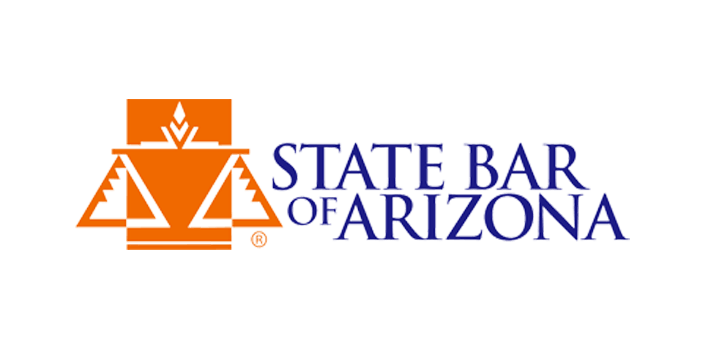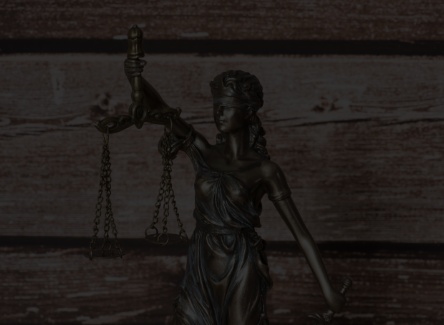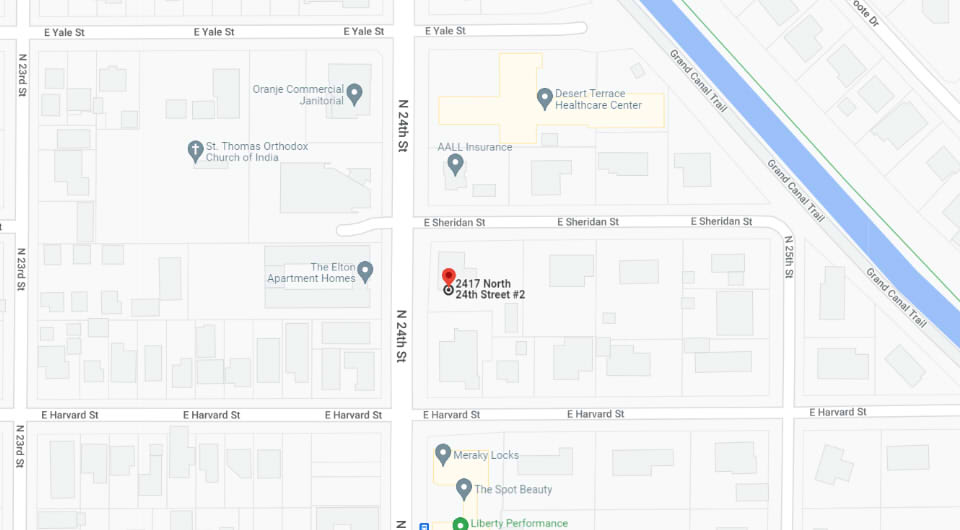If you are injured in a car accident caused by a product malfunction or another person’s negligence, you may have the right to claim compensation for the injuries and losses experienced. However, to receive total compensation, you require help from a skilled and experienced personal injury lawyer. Our lawyers at Phoenix Personal Injury Attorney Law Firm work hard to ensure that our client's rights are protected and that they get fully compensated for their injuries. Get in touch with us so that we can help you seek compensation if you are involved in a car accident.
Causes of Car Accidents in Arizona
The most common cause of these accidents include:
Speeding
Overspeeding is dangerous as it gives drivers little to no time to react to traffic conditions. Additionally, overspeeding can cause high-impact collisions that lead to severe injuries or death. Driving above the posted speed limit also puts pedestrians at risk of sustaining injuries or even death even though they are only involved in about 14% of the collisions.
Drunk Driving
Driving under the influence of drugs and alcohol is among the major causes of car accidents in Arizona. Alcohol and drugs impair the driver’s concentration and the ability to react fast to arising situations on the road.
Distracted Driving
While law enforcement emphasizes more on drunk driving, distracted driving is among the leading causes of vehicle accidents in the U.S. Distracted driving occurs when a driver’s attention is diverted away from driving. Some distractions can include texting, calling, or using your cell phone while driving, eating food, or even changing the radio. Although these activities are prohibited under the law, distracted driving continues to be a major cause of car accidents.
Vehicle Defects
It is the responsibility of every car manufacturer to ensure that every car they bring to the market is safe. There are also safety standards that every vehicle must go through for thorough testing before they are allowed on the road. However, some vehicles still have faults resulting in car accidents that cause injuries and death. Examples of common vehicle defects include defective airbags, faulty assemblies, tires, and breaks.
Aggressive / Reckless driving
In Arizona, aggressive driving is mainly punishable by paying fines, license suspension, or jail time; However, car accidents still result from reckless driving. Aggressive driving puts passengers, pedestrians, other motorists, and drivers at risk of sustaining injuries or death. Examples of reckless driving include sudden braking, running stop signs or red lights, speeding, driving under the influence, and tailgating.
Driver Fatigue
According to the National Highway Traffic Safety Administration, around 100,000 car accidents are caused by fatigued drivers every year. Drowsy drivers are likely to lose focus on what is happening on the road and can hardly respond promptly to the occasions on the road. Common symptoms of fatigue in drivers include feeling irritable or fidgety, drifting in and out of lanes, misunderstanding traffic situations, yawning frequently.
Bad Weather
Bad weather like strong winds, heavy snow, dense fog, and heavy rains can make it hard for drivers to drive safely. If you are driving in bad weather conditions, it is advisable to leave space between you and the car ahead of you and reduce your driving speed.
Improper Turns
Turning signals, turn lanes, and stop lights are placed on the road to help prevent accidents. However, some drivers still turn a blind eye to road signs and make improper turns putting themselves and other people on the road at risk of sustaining injuries or death. For instance, failing to give the right of way to pedestrians or traffic or turning where there is a stop or red signs can have tragic consequences to those on the road.
Underage Driving
Teenage drivers are more likely to be involved in car accidents due to their inexperience. Teens are often unable to or underestimate dangerous situations on the road putting them at risk of getting involved in auto accidents. Teenage drivers are more likely to tailgate, overspeed, text while driving, and drive while intoxicated. Unfortunately, vehicle accidents are the major cause of teenage death in the U.S.
Road Construction
Since it's the responsibility of the state and local governments to maintain roads, it is not uncommon for drivers to come across construction zones. Although there are construction safety laws designated to protect road constructors and drivers, various road accidents still emerge from construction zones. Drivers can easily lose control when lights, barres, and cones are misplaced. On top of that, machinery can also lead to car accidents.
Driving at Night
Darkness makes the road less visible for drivers. Unlike during the day, drivers may not see the road signs at night, putting drivers at risk of getting injured or experiencing death through road accidents.
Common Types of Car Accidents in Arizona
The most common types of car accidents in Arizona include:
- Head-on collisions — Head-on collisions mainly occur when cars are at high-speed levels, making them among the most violent types of car crashes. This type of accident occurs when the front of two or more cars collide. It mainly occurs when a driver loses control of the vehicle, fails to negotiate a turn properly, or drifts into oncoming traffic. Head-on collision accidents often lead to severe damage and injuries, especially if one vehicle is bigger than the other one, for instance, a truck and a passenger car.
- Rear-end collisions — Rear-end collisions mainly happen when one vehicle crashes into the back of another car. They mainly result from drivers not keeping enough distance between their vehicle and the car in front of them. Although most people believe that the motorist of the rear-ending car is always at fault, sometimes, the driver of the rear-ended car can be found liable.
- Rollovers — This type of accident happens when a car hits a foreign object causing it to tip to one side and roll over onto the roof or one side. Driving on unreasonably high speed or defective tires can also lead to a rollover accident.
- T-bone collisions — T-bone collisions occur when the front end of a vehicle hits the side of another vehicle. This type of accident mainly occurs when a driver fails to follow the traffic lights or stop signs. Victims of a T-bone accident are likely to suffer severe injuries, but the passenger and driver on the side are at higher risk of sustaining severe injuries. Lack of protection on the car doors can also lead to fatal injuries.
- Sideswipes — This happens when the sides of two cars come into contact with each other. This mainly occurs when two drivers drive beside each other, and one changes lanes carelessly without first ensuring that the lane is clear. Another major cause is when a distracted driver drifts carelessly into another lane. These types of accidents may cause severe injuries due to the limited protection on the side of the vehicles.
Common Types of Injuries Sustained in Car Accidents
The injuries sustained in car accidents range from minor to major injuries and even death. Below are some of the most common injuries suffered from car accidents.
- Traumatic brain injury — when you collide with another vehicle, your head will likely be hit by the steering wheel, the back of your seat, the dashboard, or the window with great force that may lead to traumatic brain injuries.
- Spinal injuries or paralysis — colliding with a stationary object or another vehicle can cause serious spinal cord injuries. Suffering total or partial paralysis can be devastating and serious. You may need support and care around the clock and may also require some home modifications (for instance, a wheelchair) or physical therapy.
- Loss of limb — This type of injury is common in serious impact car accidents. When crushing injuries occur, they are likely to cause loss of limbs. This is also a common injury for cyclists and pedestrians hit by cars.
- Internal bleeding and organ damage — You are likely to sustain permanent organ damage if you are pierced by a sharp object in a crash. This can cause internal bleeding, which can be fatal if not discovered early. If you experience organ damage, you may require emergency surgery.
- Permanent disfigurement — lacerations and burns experienced from a car crash can leave you disfigured or cause permanent scars on affected areas. If you experience a serious burn, you may be required to maintain your body temperature, which may call for massive changes in your home.
- Emotional and mental car crash injuries — apart from physical injuries, you can also sustain psychological and emotional injuries from a car crash. These injuries may include posttraumatic stress disorder, mood swings, inexplicable anger, anxiety, stress, depression, or shock. Psychological injuries can also be experienced by families of people involved in car accidents.
What Should I Do After a Car Accident?
Being involved in a car accident can be devastating and frightening. Your car may have been damaged, and you may have sustained injuries. What you do following the accident is crucial, especially if you want to file a lawsuit or a personal injury claim. Below are steps to guide you on what to do and avoid.
- Call the police — Ensure to call the authorities and ask them to file a police report. This helps you to ensure that the crash is documented properly.
- Remain at the scene — If you were injured, it is important to seek medical attention first. However, if you did not sustain any injuries, it is important to stay at the scene until the police officers arrive. This will give you a chance to give your side of the story.
- Seek medical attention — You should prioritize your health, so it is important to seek medical attention if you were injured in an accident. Even though you did not sustain serious injuries, seeing a doctor is important to be safe and to ensure that you do not have any internal injury. Ensure to keep your medical records and bills well.
- Collect as much evidence as you can — Take pictures, videos, and any other necessary materials that may be used as evidence. Take photos of how your car has been damaged and any road signs around. This evidence will be used to determine liability and compensation if you are eligible for any.
- Do not apologize — Apologizing to the other party could appear like accepting liability, which can affect your injury claim. Remain quiet since anything you say could be used against you and affect your lawsuit.
- Contact a personal injury attorney — If you were injured in a car accident or your property was damaged, it is important to talk to a personal injury lawyer who will work with the insurance companies to ensure you receive the compensation you deserve. If your claim did not go through, your lawyer could help you file a lawsuit and seek the compensation you need to recover in the trial.
- Observe the other driver's behavior — Take note of any unusual behavior you notice with the other driver, be it an alcohol odor or staggering. Their intoxication could have led to the accident, and noting it down can be evidence to determine liability.
- Exchange information with other parties —Try and gather contact information of the parties involved in the accident. The insurance information of the drivers and contacts of any witnesses are available.
What Damages Can I Claim for Car Accident Injuries
If you have sustained injuries in a car accident, there are various types of damages that you can claim in a personal injury lawsuit. Below are some of the common types of damages that you may seek if you are injured in a car accident.
Medical Expenses
When involved in a car accident, you may sustain minor injuries like bruises and a few cuts or major injuries like paralysis or permanent disability. Note that some injuries do not show symptoms immediately, that is why it is advisable to go for a thorough medical check-up after a car accident to find out if you have any internal injuries.
Some of the medical expenses from a vehicle accident include:
- Permanent disability
- Ambulance fees
- Cognitive/physical therapy
- In-home services
- Disfigurement
- Accessories like crutches
- Consultation with medical professionals
If your claim is settled, your doctor believes that you will require additional therapy and treatment, your lawyer may estimate the cost with the help of your doctor. If a driver is responsible for the death of another driver, the surviving family can file a claim for the medical expenses incurred from the time of the accident to when their loved one died. They can also file a wrongful death claim.
Lost Wages
Injuries sustained from a car accident may cause you to lose your income/ earnings. For instance, mobility issues, the time spent in the hospital, the physical therapy sessions, and other factors may hinder you from earning your normal wages. However, while filling a claim for the same, you must be able to prove that the injuries you sustained from the accident have impaired your ability to earn money. You can prove this using your past earnings.
Pain and Suffering
According to the law, any pain and suffering experienced from a car accident are considered physical or mental distress. Some of the factors considered by the jury include the prognosis for future pain linked to the injury, the seriousness of the pain experienced, and the type of injury. Sometimes, pain and suffering may also include any emotional or mental damage associated with the incident. For example, stress and anxiety.
Loss of Companionship or Affection
If you are married and your partner is injured in a car accident, it could lead to loss of consortium. Loss of affection is different from other damages in that the uninjured spouse is the one who files the claim. However, these damages cannot be recovered if you cannot recover damages for your injuries.
If a driver dies from the injuries sustained in a car accident, their family members can claim loss of companionship and loss of society damages. When these claims are filed, the judge will consider whether:
- The relationship between the plaintiff and the deceased
- Their living arrangements
- The impact the loss of the driver caused had on the family members
How is Liability Determined in Arizona Vehicle Accidents?
Liability is defined as a financial responsibility for another party’s accident, mainly associated with injuries. How the Jury and insurance companies deal with vehicle accident claims varies depending on every state's liability laws.
Arizona is a Fault-Based State
Apart from states that use hybrid laws, most states are classified as either fail or non-fault states. Fault states like Arizona mean that the faulty party at your car accident must pay for your losses like property damage, lost wages, and medical bills. To determine liability, Arizona fault insurance law implements a tort-based system. This means the party or driver with the wrongdoing that led to the accident will be financially responsible for any damages incurred from the accident.
In Arizona, there is a minimum amount of car insurance that every driver is supposed to carry to ensure that every motorist has the financial capability of paying for an at-fault vehicle accident. Every motorist is supposed to have at least $15,000 per single person, $30,000 per accident in bodily injury liability, and $10,000 in property damage.
How to Prove Liability After a Car Accident?
To receive any financial compensation, you must first determine and prove liability. You can do this with the help of your attorney, as it can be complex. Below are some of the ways you and your attorney can use to prove liability. You may use:
- An expert’s testimony
- Medical evidence
- Reconstruction of the car accident
- An analysis of vehicle damages
- Citations against the driver of the other car
- Police report
- Video footage or photographs
- Description of the accident by the eyewitness
Police officers, your lawyer, your insurance company, and the insurance provider of the other driver may all take part in investigating the accident to determine liability. After determining liability, your attorney can help you go against the liable party to ensure you get the compensation you deserve.
Arizona Car Accident Statute of Limitations
The state of law that sets a time limit on when to file a lawsuit is known as the statute of limitations. The deadlines mainly depend on the type of injuries you suffered. However, the statute of limitations does not apply to an insurance claim. Whether your own or the other party’s insurance companies require you to give them notice of any incident that could yield a claim or make a claim within a reasonable time following the accident. This means a few days after the accident.
Car accident lawsuits in Arizona follow a statute of limitations similar to that of all personal injury cases. As per Arizona Revised Statutes Section 12-542, filling any legal case seeking remedy for injuries sustained from another person’s fault should be done within two years from when the accident occurred. Note that the two-year time limit is constant regardless of whether you seek legal remedy for vehicle damage, injury, or wrongful death. It also applies even though the case is being filed by a pedestrian, motorist, or passenger. It is also important to note that the date of the accident is also counted in the two years.
The court does not consider any lawsuit filed after the two years valid. Therefore, it is important that you understand the statute of limitations and how it works for your situation. Even though you want to resolve your case through the insurance claim process, it is important to ensure that you have plenty of time to file a lawsuit if need be.
Find a Car Accident Attorney Near Me
If you or your loved one was injured in a Phoenix car accident caused by another person’s negligence, you might be entitled to seek compensation. Our attorneys at Phoenix Personal Injury Attorney Law Firm can help you fight for your justice to help you get the compensation you deserve. Get in touch with us at 602-641-9589 to book a free virtual consultation.










